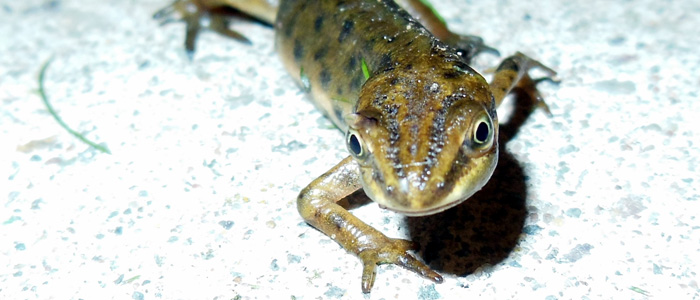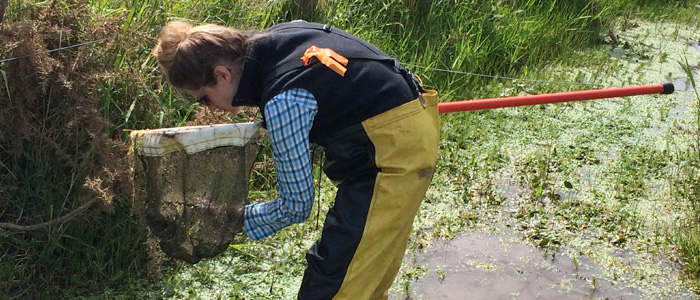
The suburbs of Melbourne have become home to a dangerous new ecological invader. Danielle Woodhams reports.
Six years ago, a single smooth newt was found in a pool of water at a Melbourne building site by a construction worker. The find was deeply alarming because it is the first time an entirely new amphibian order has been recorded outside of captivity in Australia.
The smooth newt (Lissotriton vulgaris), which belongs to the amphibian family of salamanders and newts, is native to large parts of Europe and to western Asia. Originally brought to Australia for the aquarium pet trade, it’s likely the newt found in Melbourne originates from escaped or released captive animals. Australia has no native salamanders or newts, so this discovery presents a potentially huge problem for our wildlife.
The detection of wild-living newts in Melbourne triggered an immediate response from the Victorian Government, which carried out surveys in 2011 to determine the extent of the incursion.
Four additional sites were identified in 2012, and another two were uncovered in 2013 from e-DNA sampling conducted by Dr Reid Tingley of Melbourne University. Some of these sites were up to 5km from the initial incursion, suggesting the problem may be much more widespread.

Smooth newts are prolific breeders, they have a broad diet and can use a wide range of terrestrial and aquatic habitats. They are likely to compete for food and habitat with native frogs and fish, and are potentially carriers of chytrid fungus, which has decimated frog populations worldwide. Native predators including birds, snakes and fish are also at risk if they ingest the potentially deadly skin secretions produced by the smooth newt.
An assessment by the Australian Government identified the smooth newt as having a ‘moderate’ invasive species risk, and concluded that impacts on native plants and animals were uncertain. However, two years after the first detection, the former Victorian Department of Environment and Primary Industries decided not to take any control action. Despite the modest $300,000 estimated price tag, the department conservatively considered the feasibility of eradication as ‘low-moderate’.
This decision caused concern among local scientists, who believed that a preventative course of action should be taken to avoid another cane toad disaster. For the Invasive Species Council, the poor decision-making represents fundamental flaws in Australia’s national biosecurity response systems and the low priority given to stopping invasive species that harm the environment.
With pro-bono assistance from ecological consultancy, Ecology Australia, the Invasive Species Council undertook surveys in the spring 2016 breeding season to determine if the smooth newt is persisting in Melbourne. Bait traps, dip netting, electrofishing and e-DNA analysis were used. So far, the newt has been found surviving around at least one of the previous sites and in a new nearby site.
The data collected will help trigger a rethink on eradicating the smooth newt from Melbourne before it has time to colonise other parts of Australia.
Our time to act is rapidly running out.
- Author: Danielle Woodhams is a recent science graduate from La Trobe University who volunteered to survey smooth newts with the Invasive Species Council.
- Thanks go to Ecology Australia for their highly professional pro-bono surveying and to an anonymous donor who funded the e-DNA analysis
This article is an updated and edited version of an article that first appeared in Park Watch Number 267 December 2016 published by the Victorian National Parks Association.







